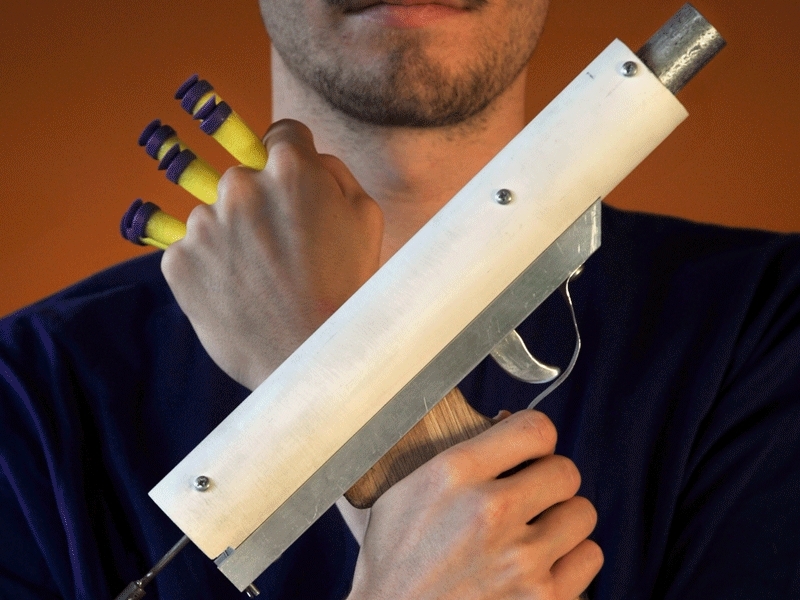Like most geek-filled offices, at my workplace we have several Nerf guns and similar toy weapons floating about. Not impressed with the performance of my colleague Lester’s Nerf Maverick, a mainstay of Nerf’s suction-cup-dart-firing “N-Strike” series, I decided to build a better Nerf gun myself.
Here’s the result: a simple weapon, single shot only, but with much greater range and accuracy than the standard toys. Let your indoor combat foes tremble; with a little practice, one shot is all you need.
I made the pistol from PVC pipe, aluminum extrusion, and aluminum tubing, with wood for the grip and various pieces of metal and plastic, mostly from my junk box — and you can easily adapt the design to use what you have in yours. A sliding trigger and telescoping plunger keep the pistol short and compact. You’ll need a small metal lathe to machine some of the parts, but as there’s nothing too critical in the design, this is a nice project to hone your skills.


